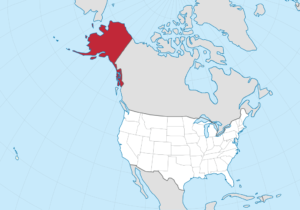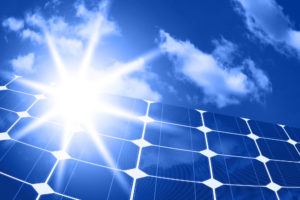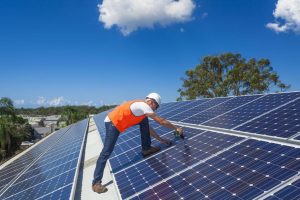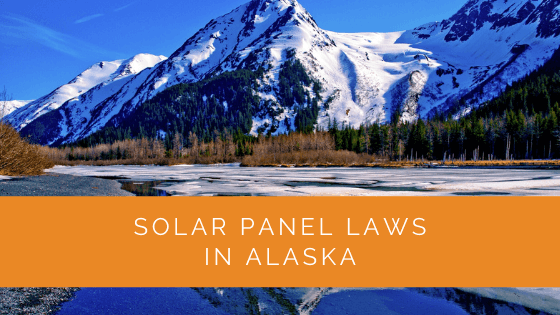 In Alaska, solar power has been used in remote locations for many years. As solar power products decrease in price, many seek solar power as an alternative energy source.
In Alaska, solar power has been used in remote locations for many years. As solar power products decrease in price, many seek solar power as an alternative energy source.
Many homes, especially in remote locations, utilize rooftop solar panels to provide up to 23 percent of their electricity. Alaska’s solar power production per capita is quite similar to that of central Europe. Germany became a leader in solar power in 2010. With the cost of power nearly eight times the national average for Alaska, many Alaska residents seek alternative power sources, and solar power is the most economical way.
Solar power can pay for itself within just a few short years, and this alone makes it an enticing consideration, especially for regions with long, dark winters and only generators for their power source.
Alaska may be the last frontier, but it’s staying right up with the rest of the world regarding solar power and its benefits.
Contents
Key Takeaways
- Alaska residents increasingly turn to solar power as an economical alternative energy source, especially in remote areas that can provide up to 23% of electricity.
- Net metering is available in Alaska, allowing homeowners and businesses to sell excess solar power back to the utility company, helping offset the cost of solar panel installation within 2 to 7 years.
- While Alaska doesn’t offer state rebates, federal incentives like the Investment Tax Credit (ITC) can provide up to 30% of the investment in solar power systems, making it an attractive option for many Alaskans.
Net Metering
Each state must offer net metering if homes or businesses have solar panels installed per federal requirements. Alaska is no different, and the regulations state that in 2010, Alaska’s net metering became effective.
Net metering is the means that allows solar-powered homes to install and utilize certain solar power products and then sell the excess back to the utility company to help offset the monthly usage.
In addition to selling the power back to the utility company, the homeowners and business owners will either get a credit to their bill for future electricity use or receive a check for the power sold back to the power company. Either way, this net metering incentive is a great way to help the homeowner or the business owner defray the solar panel installation in Alaska.
On average, most homeowners and business owners can pay for their solar power units within two to seven years of installation for their solar power system.

Financial Incentives
In Alaska, there are no state rebates for solar power. However, there are incentives on the federal level. For example, an Investment Tax Credit or ITC can give homeowners or business owners as much as 26 percent of their investment in return.
All rebates require specific forms to be filed to recover the financial incentives. Solar power can significantly reduce the cost of electricity on every level. This alone is often enough incentive for many Alaskans.
The city of Anchorage implemented the Solarize program that helps homeowners and businesses receive a steep discount for large installations in entire neighborhoods.
Net metering and tax credits help defray the cost and round out the incentives for Alaskans to install solar power in their homes and businesses.
Unfortunately, these are the only financial incentives offered in Alaska for those converting to solar power.
Does Solar Power Work in Alaska?
Many people worry that Alaska won’t have enough sun for solar power. It’s important to understand that solar power works by recharging the solar voltaic cells in solar panels with the sun’s energy. Even on a cloudy day, the clouds will help to recharge the solar power.
Many worry that Alaska doesn’t have enough sun for solar power. This couldn’t be further from the truth. The truth is that solar energy is making a massive surge in Alaska. Despite Alaska’s wealth of diesel, many smaller villages are paying more than $1 per kilowatt hour. This is nearly eight times the national average for the same diesel.
Solar power in Alaska is a huge saving after the solar system has paid for itself (typically, this is within 2 to 7 years of solar power system installation).

Future of Solar Power in Alaska
Remote villages and homes are thriving in Alaska, and with the inception of solar power, they can now have all the power they need without a huge power bill to reach their locations.
Many remote areas have no power; solar power is the only way these homes will enjoy power. Once the system has paid for itself, solar power is virtually free and lasts many years with minimal maintenance issues.
More remote villages in Alaska’s wilderness are working together to implement solar power projects. By banding together, entire communities install solar power systems and enjoy electricity. This also brings local jobs to many who would otherwise have to leave their villages for weeks to earn a living wage. By hiring locals, the community and the people as a whole all benefit.
Since solar power system installations manage to pay for themselves within 2 to 7 years, it’s a more economical way to go than other forms of power, such as generators (don’t forget the fuel cost for generators) and other forms of power.
Solar power is the wave of the future, and many Alaskans are turning to solar power for economic reasons and leaving a smaller footprint on the state as a whole.
Case Study: Residential Solar Installation in Alaska
Background
A homeowner in a remote area of Alaska reached out to Solar Panels Network USA, looking to reduce their high electricity costs and become more energy independent. The area’s reliance on expensive diesel generators made solar power an attractive alternative.
Project Overview
The homeowner’s primary goals were to lower electricity expenses and reduce dependence on non-renewable energy sources. Given Alaska’s supportive net metering policies and the federal Investment Tax Credit, we proposed a solar power system tailored to meet their specific energy needs.
Implementation
Our team conducted a detailed site assessment to determine the optimal placement and configuration of the solar panels. We designed a 6-kilowatt solar power system to maximize energy production during Alaska’s sunny months and ensure sufficient energy capture during the winter.
To leverage Alaska’s net metering policy, we connected the system to the local grid. This setup allowed the homeowner to sell excess energy back to the utility company, earning credits that would offset future electricity costs. Additionally, we assisted the homeowner in applying for the federal Investment Tax Credit, reducing their upfront installation costs by 30%.
Results
The installation process was completed smoothly, and the solar power system became operational. The homeowner immediately noticed a significant reduction in their monthly electricity bills. The net metering credits accumulated during the sunnier months provided substantial offsets during the darker winter periods.
The total savings from the reduced electricity bills and net metering credits meant that the solar system’s initial cost would be recouped within five years. The installation also increased the property value, given the enhanced energy independence and reduced operational costs.
Summary
This case study highlights the effectiveness of solar power installations in Alaska, particularly in remote areas where electricity costs are significantly higher. By utilizing net metering and federal tax incentives, Solar Panels Network USA helped the homeowner achieve substantial savings and greater energy independence. The project exemplifies how solar power can be a practical and economical solution even in regions with less predictable sunlight.
Expert Insights From Our Solar Panel Installers About Solar Panel Laws in Alaska
Net metering in Alaska is a crucial component for homeowners to maximize their solar investment. By selling excess energy back to the grid, Alaskans can significantly reduce their electricity bills, effectively using the grid as a large battery storage system.
Senior Solar Installer
The federal Investment Tax Credit provides a substantial financial incentive for Alaskans to go solar. By reducing the upfront cost by up to 30%, it makes solar installations much more accessible and financially viable, even without state rebates.
Lead Solar Consultant
Despite Alaska’s long, dark winters, solar power remains a highly effective and economical solution. Solar panels continue to generate electricity efficiently, even on cloudy days, proving that solar energy is a viable option throughout the year.
Chief Installation Officer
Experience Solar Excellence with Us!
Trust in Solar Panels Network USA, where our seasoned experts deliver top-quality solar solutions for homes and businesses nationwide. With a legacy of countless successful installations and a commitment to sustainable energy, we’re your reliable partner in the solar journey. Ready for a brighter, eco-friendly future? Call us now at (855) 427-0058 and harness the power of the sun!
Map image by Wikimedia Commons User: TUBS / CC-BY-SA-3.0
About the Author
Solar Panels Network USA stands at the forefront of solar energy solutions, driven by a team of seasoned solar engineers and energy consultants. With over decades of experience in delivering high-quality solar installations and maintenance, we are committed to promoting sustainable energy through customer-centric, tailored solutions. Our articles reflect this commitment, crafted collaboratively by experts to provide accurate, up-to-date insights into solar technology, ensuring our readers are well-informed and empowered in their solar energy decisions.

